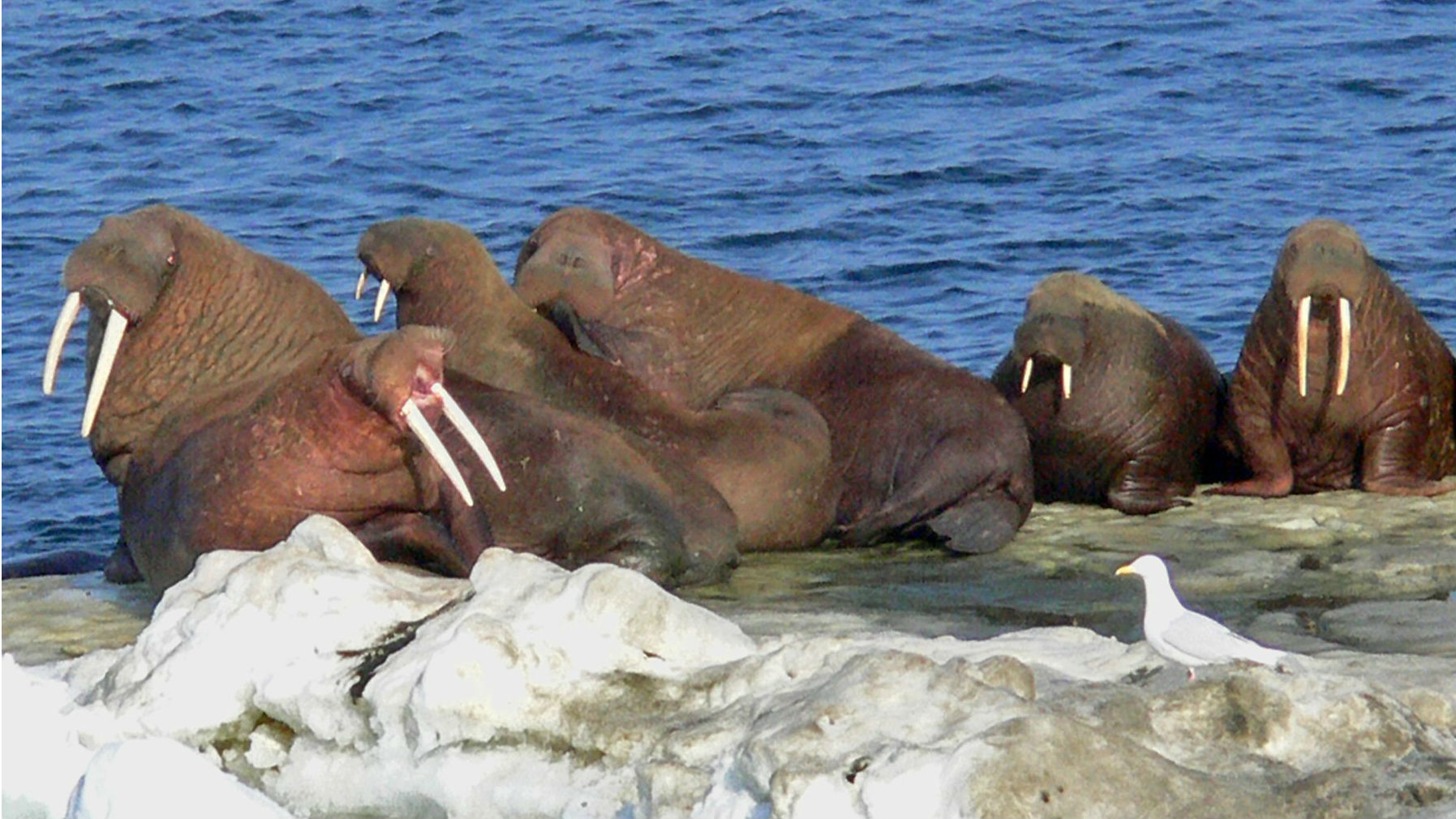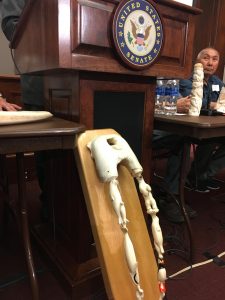Alaskans push for acceptance of walrus ivory, but there’s an elephant in the room

U.S. federal law prohibits sales of African elephant ivory, but six states have now banned the sale of ivory more broadly. That has repercussions for Alaska Native ivory carvers, who use tusks from legally hunted walrus. At a forum in Washington D.C. this week, leaders from the Bering Straits region said they are frustrated, because they’re not only fighting state laws but also social norms.
Those norms were readily apparent at a weekend craft market near the U.S. Capitol. Stalls sell jewelry made with pearls and semi-precious stones, but shoppers recoiled when asked about ivory.
“No, I would definitely not wear ivory,” Nicole Morgret said, as did almost everyone I asked. “Elephants are intelligent animals and should not be hunted.”
Another woman told me she has some ivory jewelry but doesn’t dare wear it.
“OK, it does look good, but I can’t wear it because it’s part of an elephant and I don’t want to condone and push wearing ivory,” she said.
Two sisters from Tennessee were shopping for silver pendants. One seemed open to the idea of ivory.

“Like in an earring or something? Mmm-hmmm,” she said.
Then her sister said the “E” word – “Elephants” – and a window closed.
“Like, ivory tusks?”
“I didn’t think about that.”
Walrus ivory isn’t elephant ivory
Melanie Bahnke, president of the Nome-based non-profit Kawerak, said she sees how ivory can disturb people who visit her region.
“The expression of disgust on a tourist’s face when they realize that what they’re holding is made from walrus, and yet they’re walking in with leather shoes, is ironic,” Bahnke said.
She spoke at a forum on Alaska ivory at the U.S. Senate. Congressional staffers and others crowded into a Senate meeting room. Bahnke dispelled misconceptions: Walrus ivory isn’t elephant ivory. Walrus populations are healthy.
“And we are not hunting walrus just for the sake of ivory,” she said. “It is our food source. It is our spiritual connection to our ancestors. And it’s beautiful art. And it shouldn’t be banned.”
Bahnke said it’s expensive to live in villages like Savoonga, and most ivory carvers don’t make a lot of money at it.
“If you’re able to sell some of your artwork, then you’re able to buy more gas or ammunition to harvest more walrus to feed your family,” she said.
Bahnke closed the Capitol Hill forum by asking allies to spread the word, to tell the story of Alaska Native ivory.
And stories are powerful.
A story can change everything
At the crafts market, I talked to a vendor – Erika Rubel, an artist who makes spice racks and shelves from salvaged materials. She carefully considered whether she would wear ivory.
“I might wear an antique ivory bead, but I wouldn’t get anything that was made now,” she said.
How about walrus ivory, harvested by Native people practicing the tradition of their ancestors to feed their families? Rubel warmed to the idea.
“As long as it’s sustainable,” she said.
Rubel’s not at all worried her friends would think she’s exploiting elephants if she were sporting ivory carved by a Bering Sea artist.
“No, because if they did question it, they would probably say, ‘Wow that’s not like you’ (and) I would explain the story behind it,” Rubel said. “Which is also part of why you buy something from the maker: You’re also buying the story and the history that went into making it.”
That would be music to the ears for the champions of Alaska Native ivory.
Related stories from around the North:
Canada: Former Canadian police officer headed to jail for smuggling narwhal tusks to U.S., Radio Canada International
Norway: Tourists suspected after narwhal tusk goes missing in Svalbard, Norway, Barents Observer
United States: Ivory bans in contiguous U.S. hit Alaska Native carvers hard, Alaska Public Media



